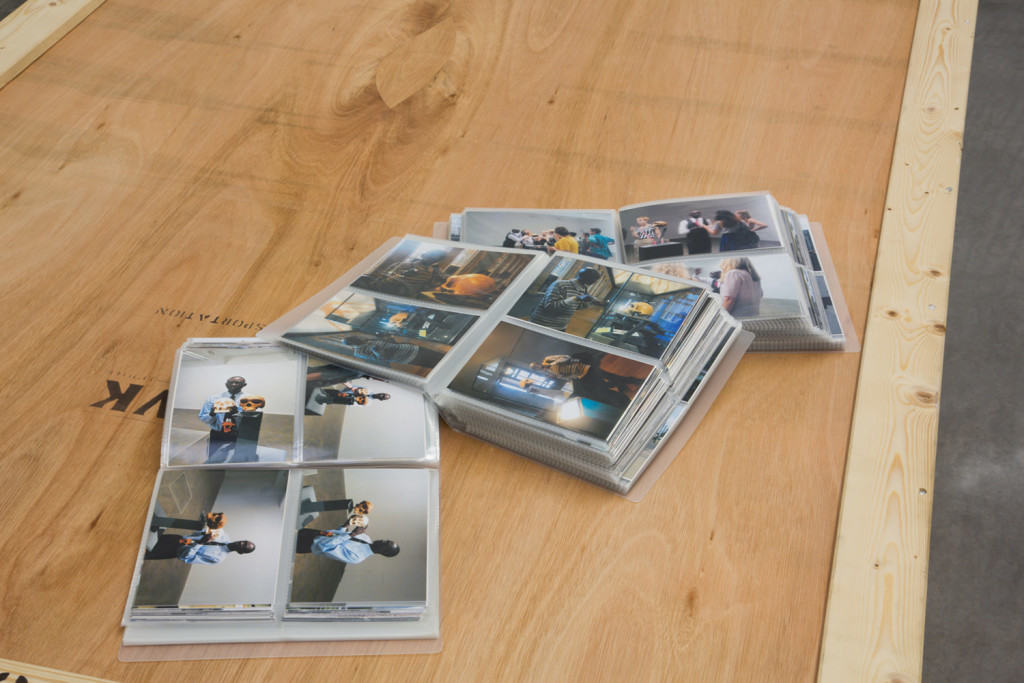Pratchaya Phinthong’s Human Archeological Quarrying

Broken Hill, Instalación / Installation 2013
Phinthong’s work firmly addresses economic, social, and geopolitical issues and beyond any artistic or formal experience, looks to find his place and identity playing on the economic representations and cultural existences. While movement has always been a central theme in Phinthong’s production, his work manifests a profound interest in artwork loans and the correlated cultural identity. Indeed, the experience of displacement is the constant focal point of his production.
In, the artwork Broken Hill, Phinthong explores the status of the skull’s replica founded in “Broken Hill” held in the collection of the Lusaka National Museum, Zambia, and the displacement of the original to the Natural History Museum in London, examining the historical narratives are performed through objects. Although Broken Hill engages with discussion around the provenance of objects, the artist questions the human agency. In this case, the skull’s loan is product of a fragile network of personal relationships across three continents.
“Broken Hill” skull is the first early human fossil found in Africa and provided the primary evidence to support Darwin’s theory of evolution, proposing humans as the natural descendants of primates. Discovered by Australian miners in 1921, the skull was taken to London by the British colonial authorities.

Born in Bangkok, Thailand, Pratchaya Phinthong creates situations as an invitation made to the visitor to fill the gaps in fictional settings with multiple pathways. That is to say, he creates a trip down a fiction, or a process here he can test the visitor’s perceptions. Phinthong’s interest lies in the replica skull, whose status as a fake is revealed to visitors to the Lusaka National Museum by one of the museum’s guides, who, as part of his tour of the collection, narrates the story of the original skull’s discovery and its subsequent removal.

For Broken Hill, Phinthong replaced the copy of the skull with an identical model purchased online and invited Kamfwa Chishala’s museum guide to travel to London for the duration of the exhibition in order to retell the complex history of the skull to visitors, as he does in Lusaka. The installation also includes the photographic register of Kamfwa Chishala’s experience in London and the transportation crate for the skull.
This artwork was developed during Phinthong’s ongoing research in Africa, including Sleeping Sickness (2012) for dOCUMENTA (13)—attempting to counter a deadly disease transmitted throughout Ethiopia, Tanzania and Zambia by the tsetse fly, with an ecological fly trap produced by a Thai company and deployed by local people.
Pratchaya Phinthong lives and works in Bangkok, Thailand. Recent solo shows include Pratchaya Phinthong, gb agency, Paris; Sleeping Sickness, Centre d’Art Contemporain, Rennes (both 2012); Give More Than You Take, GAMeC (Galeria d’Arte Moderna e Contemporanea), Bergamo and CAC Brétigny. Group exhibitions include Materials, Money and Crisis, MUMOK, Vienna; I Know You, Irish Museum of Modern Art, Dublin (both 2013); dOCUMENTA (13), Kassel; The Ungovernables, New Museum Triennial, New York; Modern Monsters / Death and Life of Fiction, Taipei Biennial; Until it Makes Sense, Kadist Art Foundation, Paris and How to Work (More for) Less, Basel.
